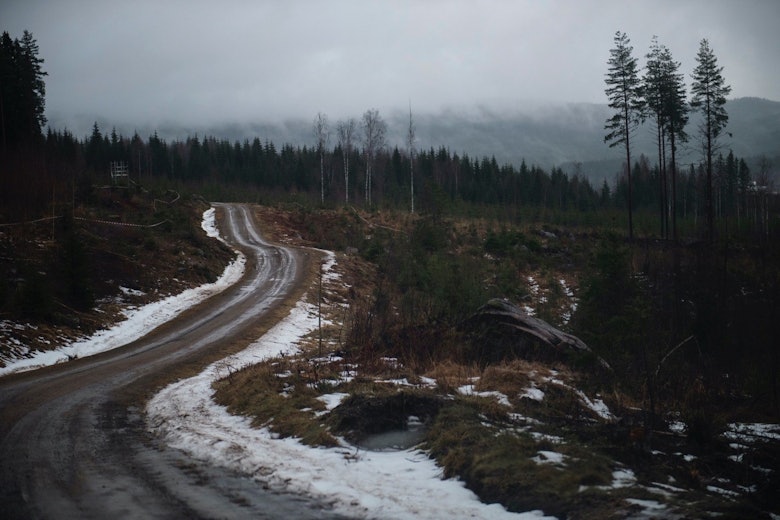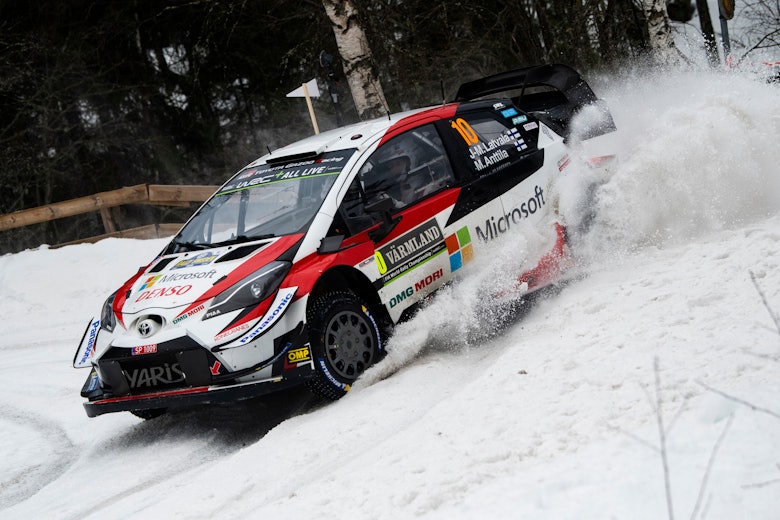So, we’re going to Sweden. It’s a brave call.
As I pointed out in my last column about Rally Sweden’s plight, the organisers are quite literally damned if they do and damned if they don’t. In many ways, saying yes and backing themselves was the only option.
Sure, the weather might get warmer at the end of the week. But it might get colder. And it might snow. And snow and snow. And imagine the frustration for Glenn Olsson and his crew if he’s pulled the plug last night, only to sit and watch winter arrive around him.
It’s happened before.
The flip side, of course, is that conditions in Norway worsen and we then lose even more stages. Right now, we only have Hof-Finnskog, Finnskogen and Nyckelvattnet, comprising 60 kilometres, to play with as it is. And that’s if they all run to their full length. What do we do if Friday’s run damages those roads beyond repair? What does Saturday look like then?
I doubt very much, for example, they organisers will run Likenäs on Sunday morning, if there’s any danger of that impacting on the power stage. Instead, we’ll likely have a lie-in on Sunday, then watch a single 21-kilometre test live on telly.
I’ve spoken to folk from all corners of the service park and, privately, there are grave concerns about round two next week.
Undoubtedly, what was presented on Tuesday night is the best case scenario. And it was presented with everything crossed.
Teams are testing this week, but they’re testing for conditions about which they know precious little. And conditions which are constantly evolving.

Sweden last had snowless stages in 2016 (pictured)
I see Karlstad and the Torsby Sprint stages are still on the schedule – the ones to bring in the spectators. Karlstad’s possible with constant watering and regular silent prayer to the great God of freezing things. But what’s it going to look like? And, more pertinently, will the roads look the same from the recce to the rally?
As I outlined at the top of this piece, I get the thinking behind the green light, but it’s the possible deeper motivations which concern me.
Yes, we need rallies to make the world championship, but at what cost? Everybody’s aware of the implications of running studded tires on anything other than a perfect surface – just like we’re all aware of the damage the rocks that can and will be pulled out will do to those tires. We’ve seen it all before. But we’ve never seen it on the scale that’s potentially being put forward for next week.
I’m not going to bother talking about the speed, if the drivers get spooked they can slow down. The FIA demonstrated its awareness of this issue in Sweden when it cancelled the second run of the Knon stage in 2017 (after Ott Tänak averaged 137.9kph for its 31.60 kilometres).
The potential harm to a snowless Rally Sweden goes well beyond the damage to the roads.
The above is a realistic and honest reflection of opinion in the service park. There were those of a more extreme opinion, those who questioned the sense in anything other than skipping Sweden and heading straight for Mexico.
But where would that leave the WRC Promoter? Through no fault of its own, we’d have had one round from the last three running as expected – the spectre of which merely adds to the financial misery its already facing with the departure of Citroën, Michelin and ŠKODA (as a full factory team – obviously one of the upsides to running next week is seeing Oliver Solberg in a works Fabia R5 evo for the first time).
Enough now. Enough pontification. Let’s get behind what’s coming, pray for snow and hope for the best.

Last year's Rally Sweden didn't face the same difficulties as this year's event – credit: Jaanus Ree/Red Bull Content Pool
Just before I do go, social media’s thrown up a few questions which I might be able to help with.
Why not just run a gravel rally?
Because there’s too much ice around for a gravel rally. Yes, we could take the drivers back to a particularly icy Kielder in the Eighties or Nineties, where unsuitable boots were acceptable. But we’ve moved on from there. It’s no longer acceptable.
And running the full Sweden-spec ice tyre on pure gravel would destroy the soft Swedish roads in no time.
What happens if it doesn’t run?
The FIA’s 2020 World Rally Championship sporting regulations are very clear, with section three focused on championship and points.
Future of the event: 3.2 cancellation of a championship rally. Any championship rally which is cancelled will not be entered in the championship in subsequent years, except in a case of force majeure as recognised by the FIA.
Now, it’s perfectly reasonable to expect the weather to be recognised as force majeure and, don’t forget Sweden has a three-year deal with the promoter, but it would be naïve to think not running this year could have some sort of impact on next year.
How many points will be on offer?
Full points are available if 75 per cent of the rally has run. Half points are available if between 50 and 75 per cent of the route runs and one third points are offered for between 25 and 50 per cent. No points are awarded if less than 25 per cent of the route runs – and decimals are rounded up or down to the nearest whole number. None of the above counts for the power stage – if the final test runs as planned then the full five go to the winner.
For the reasons listed above, there’s no point speculating on how much of the route will run.





